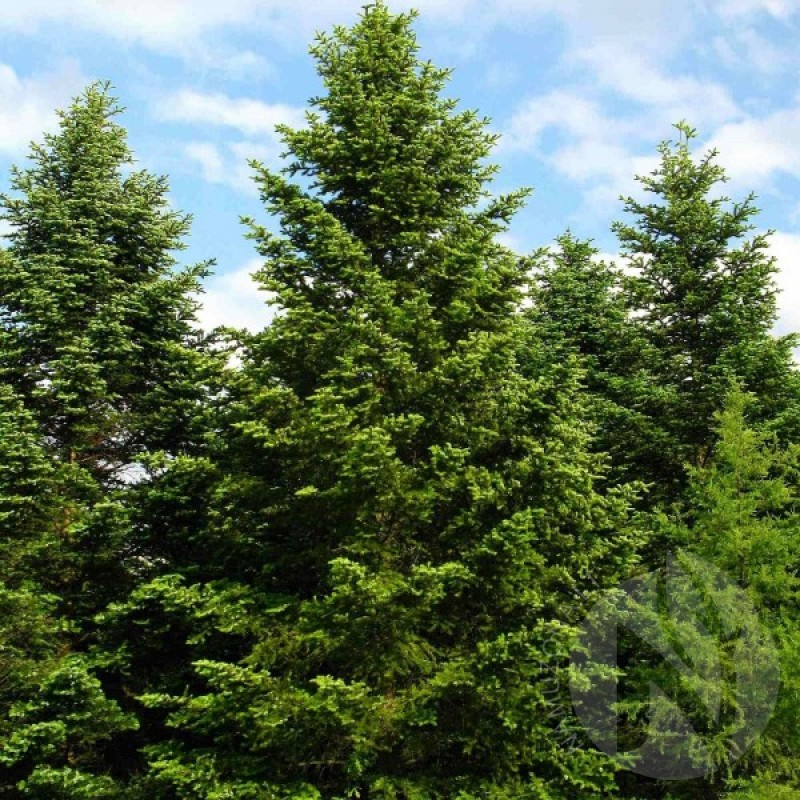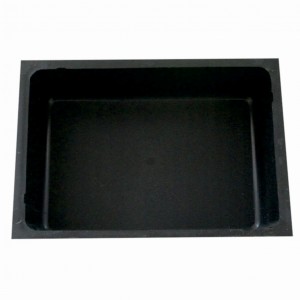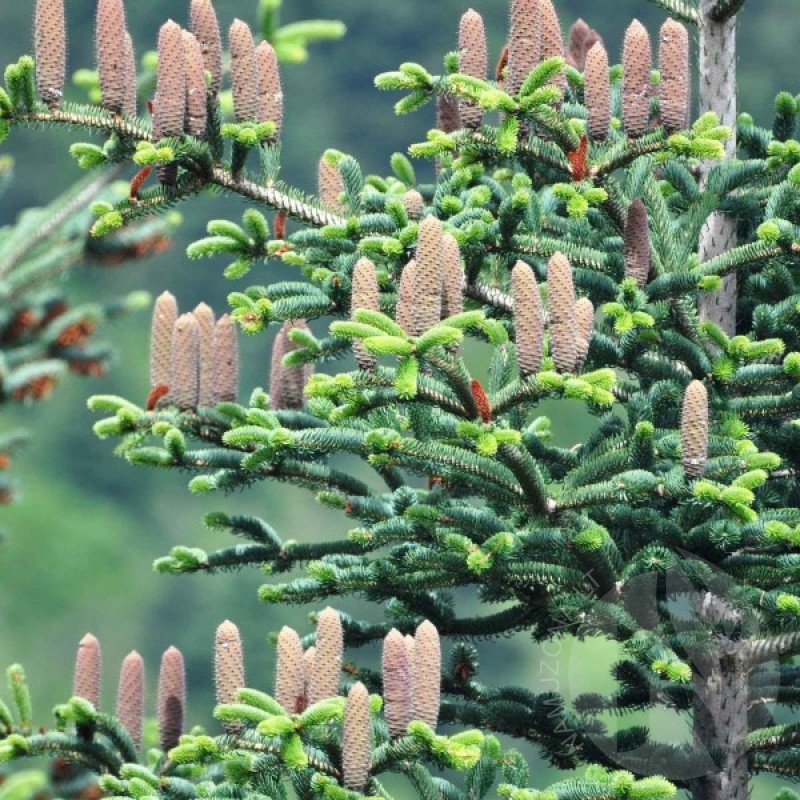
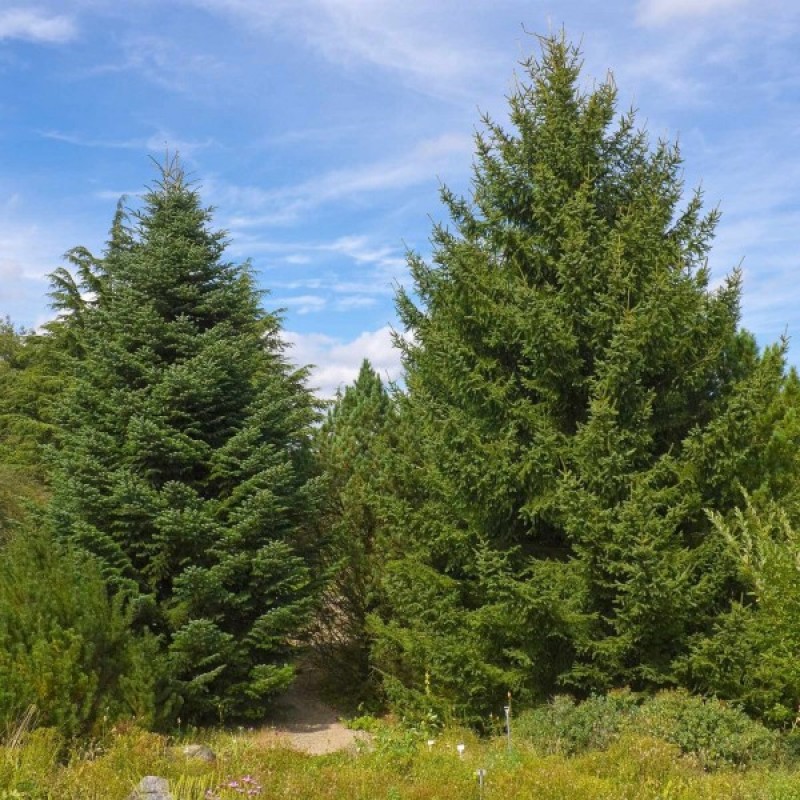
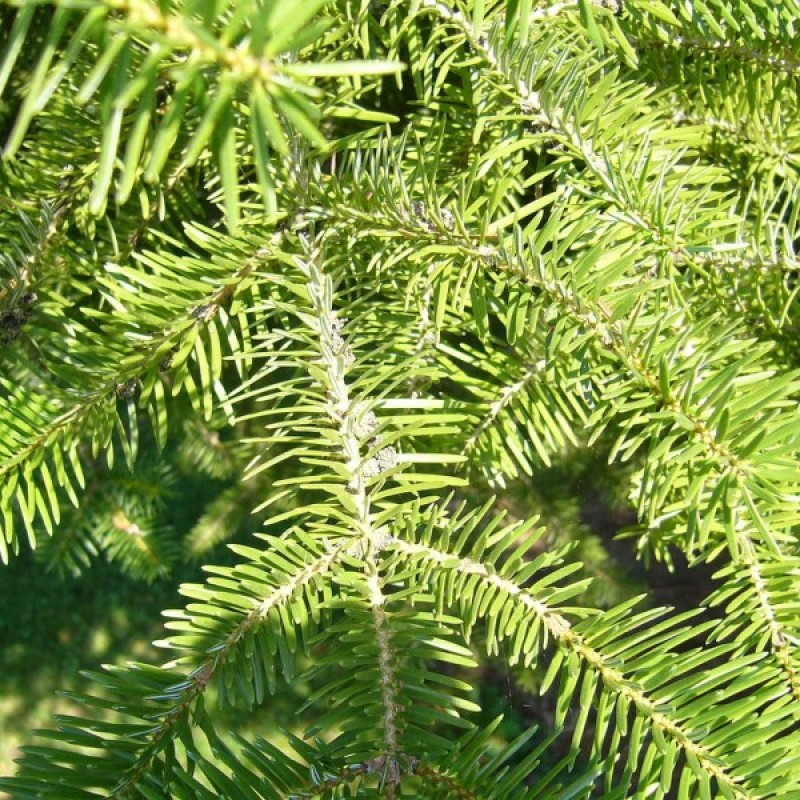
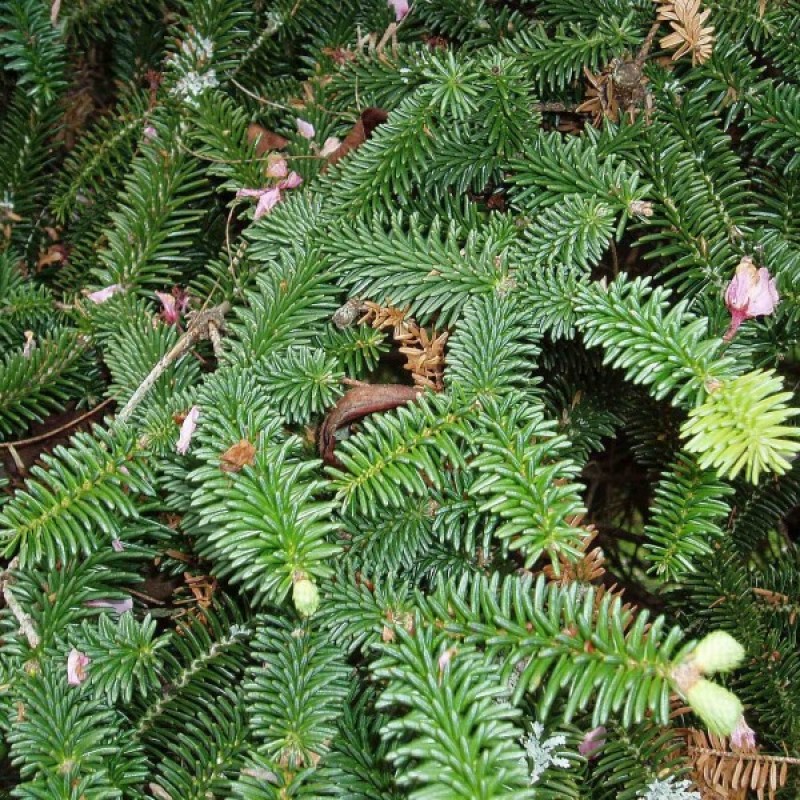
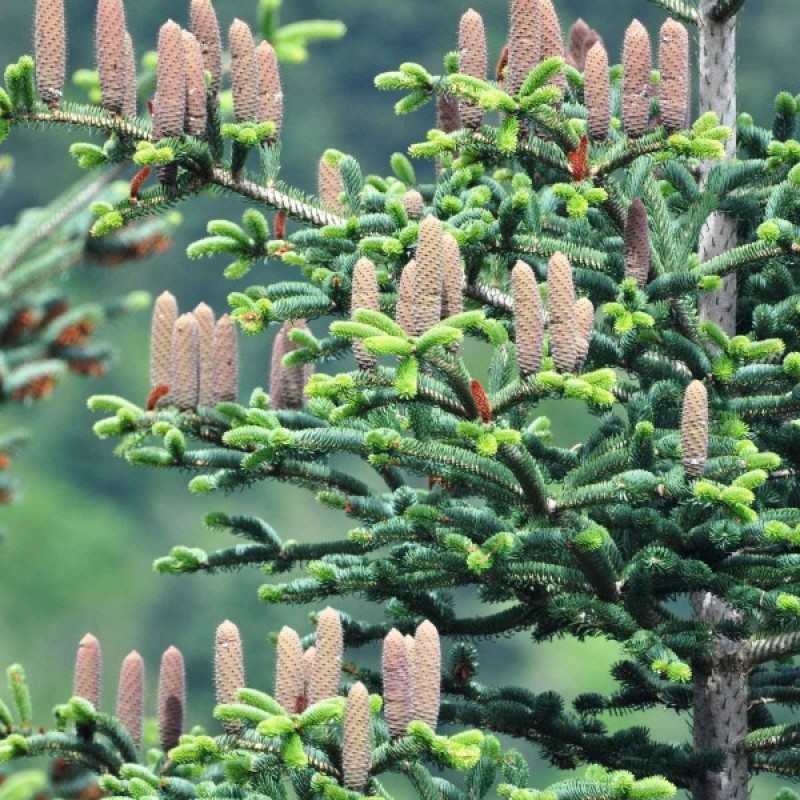
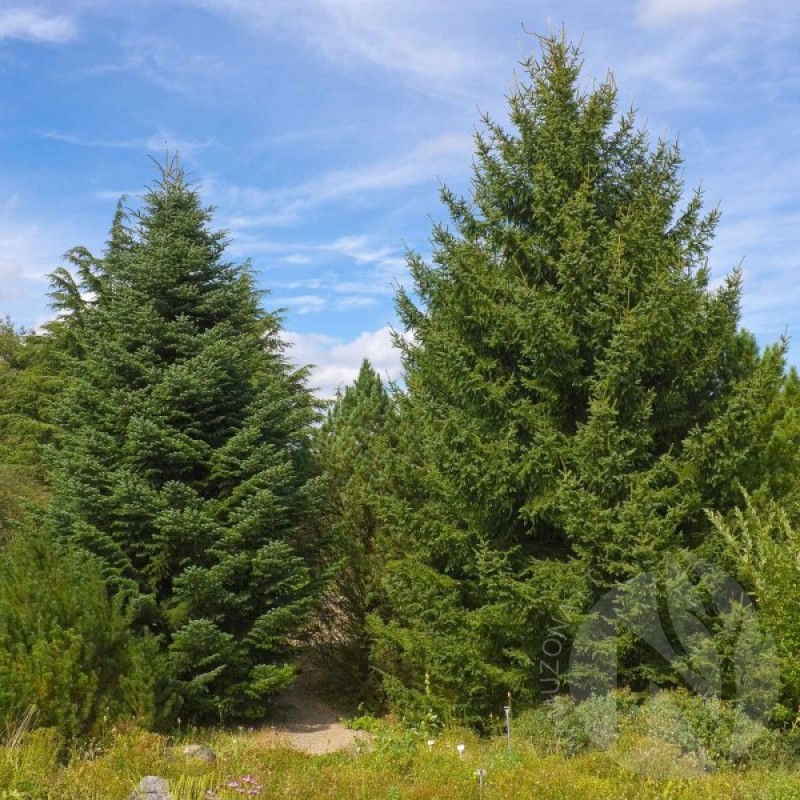
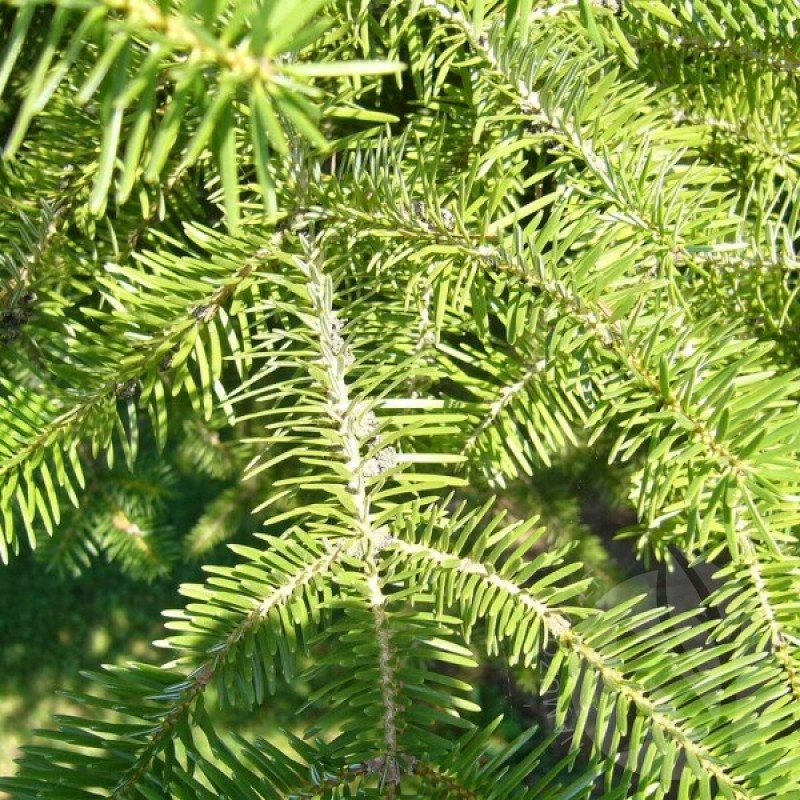
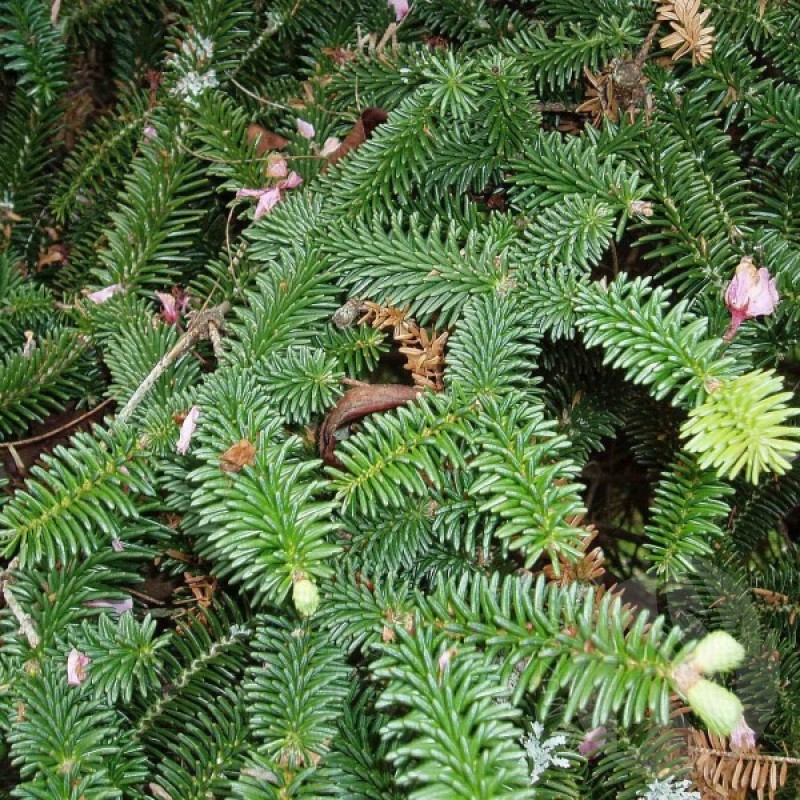
PAY ATTENTION!
All seeds (except SOLD OUT) are available for immediate shipping and will be dispatched within 1-2 business days.
INFORMATION NEEDED? PLEASE CONTACT US NOW!
The highlands of Greece reveal stands of this tall evergreen conifer, appropriately known as the Grecian fir. It grows on calcareous and alkaline soils at elevations between 1,800 and 7,000 feet. When mature, the tree's silhouette is a tall, broadly pyramid with horizontal branches.
When young, the Grecian fir has smooth, reddish brown branches, but with age the bark is gray with streaks of pink and brown on fissured, oblong plates. The flattened needles are glossy dark green with a whitish underside. Crushing the needles releases only a faint fragrance. The male and female cones appear on different branches, with the female wind-pollinated cones persisting well into winter. Each cone is long and upright, first sienna to violet, and ripening to golden brown. Specks of resin cover the cone's scales. Shed seeds are triangular and reddish brown.
Grow the Grecian fir in full to partial sun in a moderately fertile, moist but well-drained soil. It tolerates moderately acidic soils, but a neutral to alkaline soil is best. Use is as a windbreak or specimen tree.
A somewhat faster growing fir, it's become a recent subject for use on Christmas tree farms.
Genus - Abies
Species - Cephalonica
Common name - Greek Fir
Pre-Treatment - Required
Hardiness zones - 5 - 8
Height - 80'-110' / 24 - 33 m
Spread - 25'-35' / 7 - 11 m
Plant type - Large Tree
Vegetation type - Evergreen
Exposure - Full or Partial Sun
Growth rate - Fast
Soil PH - Acidic, Neutral, Alkaline
Soil type - Clay, Loam, Sand
Water requirements - Average Water
Landscape uses - Feature Plant, Screening / Wind Break
Leaf / Flower color - Dark Green / --
GERMINATION INSTRUCTIONS
A short period of cold and moist stratification (in the fridge) needed.
1. Soak the seeds in clean water for 24 hours. Fully drain away all of the water and place the seeds in a zip-lock freezer bag. Place the seeds in the fridge. Make sure the seeds during this period not dry out or are waterlogged otherwise the pre-treatment will be ineffective.
2. After 6-8 weeks of teh pretreatment seeds are ready to be sown.
3. Sow in a good quality potting compost. It shoudl be sterile and clean, never used before. Firm the compost gently, water and sow the seeds on the surface. Cover the seeds lightly (~2 mm) of vermiculite or sieved compost. Keep moist and at room temperature.
4. Germination will begin in a few weeks.
Atsiliepimų apie šią prekę kol kas nėra.
No questions about this product.


